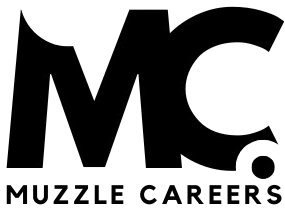Artificial intelligence (AI) is revolutionizing the way we work and interact with the world. At its core, AI involves developing intelligent computer systems that can learn and perform tasks traditionally done by humans. These systems are trained on vast amounts of data, enabling them to analyze information, solve problems, and even make decisions with surprising accuracy and speed.
AI encompasses a range of technologies like image generation, machine learning, and natural language processing (NLP). These powerful tools are transforming industries by automating tasks and enabling smarter data analysis. This human and machine collaboration is leading to increased efficiency across various sectors, making it easier for people to focus on more complex endeavors.
AI extends beyond just data processing and problem-solving. It’s also making waves in the creative realm,
The reach of AI extends beyond just data processing and problem-solving. It’s also making waves in the creative realm, with AI art emerging as a fascinating new frontier. This is where we’ll delve into the exciting world of AI art and explore how machines are being used to produce creative works.
What is AI Art?
Ever wondered what “AI art” is? You’ve come to the right place. AI art, also known as generative art, utilizes artificial intelligence to create visual works. It can automate the image generation process, significantly speeding things up. This technology isn’t limited to just visuals; it can also assist with composing music, crafting compelling written content, and even building websites.
One key distinction to make is between AI art and digital art. Digital art is the product of human creativity, crafted using digital tools. AI art, however, leverages algorithms that can generate art based on text descriptions. This empowers even those with less artistic experience to create unique pieces.
The Origins of AI Art
While it may seem like a recent phenomenon, AI art has a surprisingly long history. It all began in the early 1960s with the pioneering work of Harold Cohen, who developed AARON, considered the first-ever AI art program.
Fast forward to 2014, and the invention of Generative Adversarial Networks (GANs) marked a significant leap forward. Though not designed specifically for art creation, GANs have become a powerful tool in the field. In 2015, computer scientists took another step by training AI systems to create art based on text descriptions. This essentially reversed the way our smartphones identify and categorize objects in images.
Digital art is the product of human creativity, crafted using digital tools. AI art, however, leverages algorithms that can generate art based on text descriptions
The year 2021 witnessed a major breakthrough with OpenAI’s launch of DALL-E. Trained on massive datasets of images and concepts, DALL-E sparked a new wave of excitement for creating art through text prompts. This innovation spurred further development, leading to the launch of popular AI art generators like Midjourney in 2022.
As you can see, the history of AI art is rich with innovation and continues to evolve rapidly.
Here’s a continuation of the passage about AI art, explained in simpler English:
How Does Machines See and Create Things?
So, how do these AI art tools understand our prompts and turn them into images? The secret lies in a powerful learning system called a neural network. Imagine this network as a vast digital library containing millions of text descriptions paired with corresponding images. By analyzing this massive dataset, the AI learns to associate words with visual elements.
But the AI doesn’t see images in the same way we do. It doesn’t have eyes! Instead, it processes images as a collection of colored pixels, specifically red, green, and blue (RGB). Through this lens, the AI learns to recognize patterns and relationships between textual descriptions and the visual information they represent.
Once you provide a text prompt, the AI system goes to work. It takes an initial guess based on its understanding of the words and starts refining its creation through a series of adjustments. Different factors, or variables, come into play as the AI strives to match your prompt as accurately as possible.
For example, if you ask it to create an image of a “huge red building,” the AI will consider various aspects of a building: its size, shade of red, number of windows and doors, and overall architectural style. By analyzing these variables and comparing them to its database, the AI generates an image that aligns with your description of a “huge red building.”
This process may involve multiple iterations, with the AI constantly refining its creation until it reaches an output that meets its internal criteria for matching your prompt.
How Does It Create Output?
Since the algorithms keep going through training data, they keep searching for different variables to make the results better. Consequently, it creates a result (art) that has all these points. For instance, with the huge red building example. The AI tool will put the building in one dimension, red color in the second, and then make dimensions for the building. It’s known as creating the latent space. When you’re more descriptive with the words, it will work on more dimensions.
Before completing the output, diffusion happens. To illustrate, it uses the text description and dimensions to create a random image. Then, it starts making improvements. Every adjustment helps refine the images, so the output is closest to the description.
Understanding Diffusion
When we think about the huge red building, there will be millions of such pictures. So, the systems will analyze all these data points and create a picture of the building. Diffusion is the process of adding different changes or transformations to the picture, which enhances the noise. In addition, the images start looking different from the original ones, leading to a unique yet generated picture of the building.
Different Forms of AI Art Programs
Generative AI is more than creating images. To illustrate, it’s a reliable way of creating videos, avatars, logos, and image editing. So, let’s talk more about these forms below!
Avatars
As the name suggests, these tools create avatars for live streaming, gaming, and social media. There are multiple tools that use text-to-image systems. However, there are tools that turn your pictures into avatars (Lensa is a fitting example). They are available in the form of VAs and chatbots – the purpose is to understand the prompts and provide a helpful result. People usually use it for 3D avatars, which can be used as gaming avatars and AVIs. For example, with PicsArt, you can upload over 30 pictures of yourself, and it will customize the avatar.
Videos
It is a tedious and never-ending process to create a video for websites or presentations. For this reason, the use of AI video generators is increasing. Pictory is a good example, as it helps make marketing videos within a few minutes (it saves you weeks of headaches). In fact, you can add the link to some written post on this platform, and it will create a fully immersive video.
Logos
If you’re working as a logo designer and need some inspiration, you can get help from AI logos. In fact, it’s a great tool for small businesses to make their own logos without paying anyone. Wix Logo Generator is a clear example. It’s integrated into the website builder and creates a new logo.
Music Generators
This is a huge leap for AI. That’s because it’s helping content creators make songs and tracks for their projects in an easy and quick way. Mubert is a good example with which you can make money and music at once. To illustrate, you’ve the option to create a song through a text prompt and sell it on the marketplace (yes, this tool has its own marketplace).
Photo Editing
This is a reliable use case. It’s perfect for enhancing, modifying, and manipulating the images. Many people are using it to upscale the images (it’s a better and automated version of Photoshop). In fact, Photoshop has the text-to-image fill, so you can remove or add elements and generate new pictures through prompts. Another feature is to extend the canvas as you want.
Website Builder
Not everyone is skilled enough to launch their own website. Contrarily, we know people who have the skills, but they don’t have the time. For all those people, there are website builders with AI infusion. Framer AI is a good example, as it can help launch a new website and handling the development.
How to Align with Ethics While Making AI Art
There are many ethical points to consider when making AI art. This is because there are many legal consequences of showing or selling AI contents that violets copyrights. Adobe Firefly has been considering this point. We are saying this because they trained their models on only royalty-free images, so they won’t get into legal hot waters. Also, they’ve mentioned that all the pictures generated from their platform are only meant for entertainment purposes.
For this reason, whenever you’re about to use some AI tool, you’ve to read about how they were trained. In particular, if you want to use the art for commercial means, see if the platform supports it. In most cases, it’s possible if you’ve subscribed to the paid plan, but don’t forget to double-check it.
Important Features for AI Art Generators
Several key features in AI art generators ensure visually appealing results. So, let’s see what some of these features are:
Realistic Rendering
The high-end tools often create extremely realistic pictures, and realistic rendering is the reason behind it. With this feature, the tools can easily replicate the important points of the input picture, so the output is on point.
Generative Algorithms
Depending on the input data, these tools can create new artwork. That’s because they use generative algorithms. With this feature, the algorithm is trained on current data and data is used to generate new pictures. The output pictures are fresh, new, and unique.
Creative Tools
These tools are meant to let people experiment with the results and images. For instance, users can adjust the pictures and modify the colors. The most common tools include adjusting the brightness, sharpness, contrast, and saturation.
Interactive Interface
To make sure that the tools are adapted by more people, these tools have extremely intuitive and interactive interfaces. This means that you’ve the option to manipulate or edit your pictures as you want. The interactive features allow the users to modify pictures in real-time and add filters. Moreover, you can preview the output after editing. This feature empowers users to showcase their creativity effectively.
Final Thought
At least by now you should know how AI makes art, that it has a lot of potentials. It has the power to revolutionize the art industry. In particular, it can help people to make transformational art, and assist people without art experience create artistic impressions, ensuring that everyone participates in art creation, regardless of their proficiency in colors or shapes. However, it falls on us to use ethically correct tools. Also, don’t pirate anyone’s art because there’s no art without uniqueness and creative process.
Discover more from MUZZLECAREERS
Subscribe to get the latest posts sent to your email.








